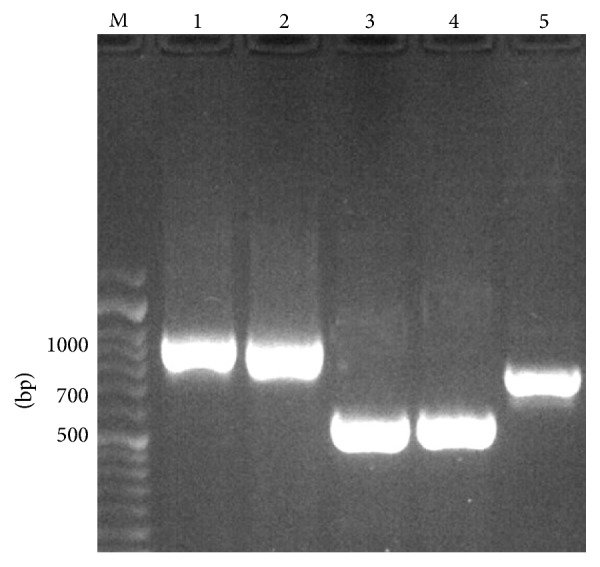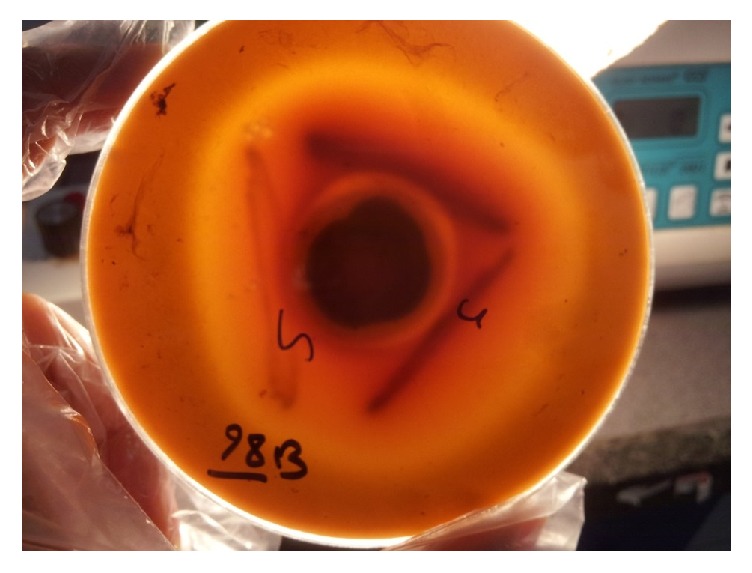Evaluation of CAMP-Like Effect, Biofilm Formation, and Discrimination of Candida africana from Vaginal Candida albicans Species.
IF 1.1
Q4 MICROBIOLOGY
引用次数: 9
Abstract
Candida africana as a species recovered from female genital specimens is highly close to C. albicans. The present study was conducted to discriminate C. africana from presumptive vaginal C. albicans strains by molecular assay and evaluate their hemolysin activity, biofilm formation, and cohemolytic effect (CAMP) with vaginal bacterial flora. A total of 110 stock vaginal C. albicans isolates were examined by HWP1 gene amplification. Hemolysin activity and the ability of biofilm formation were evaluated by blood plate assay and visual detection methods, respectively. Staphylococcus aureus, Staphylococcus epidermidis, and Streptococcus agalactiae were used to evaluate the CAMP-like effects in Sabouraud blood agar media. Based on the size of the amplicons (941 bp), all isolates were identified as C. albicans. All samples were able to produce beta-hemolysin. Moreover, 69 out of 110 of the isolates (62.7%) were biofilm-positive, 54 out of 110 Candida isolates (49%) demonstrated cohemolytic effects with S. agalactiae, and 48 out of 110 showed this effect with S. aureus (43.6%). All isolates were CAMP-negative with S. epidermidis. We detected all isolates as Candida albicans and almost half of the isolates were CAMP-positive with S. aureus and S. agalactiae, suggesting that these bacteria increase the pathogenicity of Candida in vaginal candidiasis.


camp样效应、生物膜形成及非洲念珠菌与阴道白色念珠菌鉴别的评价。
非洲念珠菌作为一种从女性生殖器标本中恢复的物种,与白色念珠菌高度接近。本研究采用分子分析的方法对非洲念珠菌和阴道白色念珠菌进行了鉴别,并对它们的溶血素活性、生物膜形成和对阴道菌群的溶血作用(CAMP)进行了评价。对110株阴道白色念珠菌进行HWP1基因扩增检测。采用平板法和目测法分别评价溶血素活性和生物膜形成能力。采用金黄色葡萄球菌、表皮葡萄球菌和无乳链球菌对Sabouraud血琼脂培养基进行camp样效应评价。根据扩增片段的大小(941 bp),所有分离株均为白色念珠菌。所有样品都能产生-溶血素。110株念珠菌中有54株(49%)对无乳链球菌有溶血作用,110株中有48株对金黄色葡萄球菌有溶血作用(43.6%)。所有分离株表皮葡萄球菌均为camp阴性。我们检测到所有分离株均为白色念珠菌,几乎一半分离株的金黄色葡萄球菌和无乳葡萄球菌camp阳性,表明这些细菌增加了念珠菌在阴道念珠菌病中的致病性。
本文章由计算机程序翻译,如有差异,请以英文原文为准。
求助全文
约1分钟内获得全文
求助全文

 求助内容:
求助内容: 应助结果提醒方式:
应助结果提醒方式:


